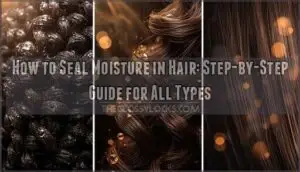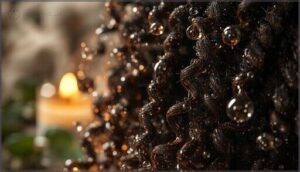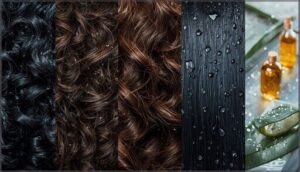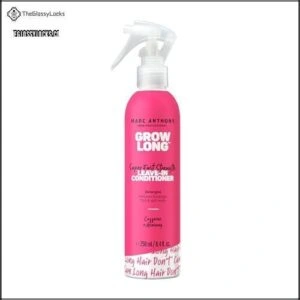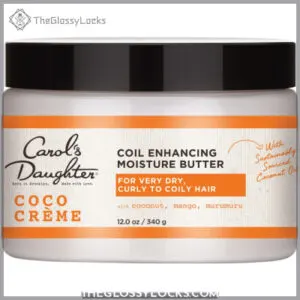This site is supported by our readers. We may earn a commission, at no cost to you, if you purchase through links.
Your hair drinks in moisture beautifully after wash day, but by day three it feels dry and brittle again. This frustrating cycle happens because moisturizing alone isn’t enough—you need to seal that hydration into your strands before it evaporates.
Sealing moisture in hair means layering oils or butters over your water-based products to create a protective barrier that locks in hydration for days instead of hours. When done correctly, this technique can slash breakage rates by half and boost length retention by 30%, transforming how your hair reacts to your routine.
The difference between thriving, resilient strands and constant damage often comes down to mastering the right sealing method for your unique hair type and porosity level.
Table Of Contents
- Key Takeaways
- What Does Sealing Moisture in Hair Mean?
- Preparing Hair for Effective Moisture Sealing
- Step-by-Step Guide to Sealing Moisture
- Choosing The Best Oils and Butters
- Sealing Moisture for Different Hair Types
- Top Products for Sealing Moisture in Hair
- Maintaining Moisture and Healthy Hair
- Frequently Asked Questions (FAQs)
- Conclusion
Key Takeaways
- Sealing moisture means layering oils or butters over water-based products to create a protective barrier that locks hydration into your hair for 2-4 days, which can cut breakage rates by 50% and boost length retention by 30%.
- Your hair’s porosity level determines which product layering method works best—high porosity hair benefits from the LOC method (liquid, oil, cream), while low porosity hair absorbs better with LCO (liquid, cream, oil).
- You must start with clean, clarified hair because product buildup blocks up to 99% of moisture absorption, making it impossible to seal in hydration no matter how many products you apply.
- The right oil weight matters—fine hair needs lightweight options like jojoba or argan to avoid buildup, while thick, coarse hair thrives with heavier sealants like Jamaican Black Castor Oil or shea butter.
What Does Sealing Moisture in Hair Mean?
Sealing moisture in hair isn’t rocket science, but it’s one of those game-changers that separates healthy, thriving hair from dry, brittle strands. Think of it as locking the door after you’ve brought your groceries inside—you’re trapping the good stuff where it belongs.
Let’s break down what this actually means and why it matters for your hair’s health and growth.
Difference Between Moisturizing and Sealing
Here’s the thing: moisturizing and hair sealing aren’t the same. Moisturizing adds water-based hydration to your strands, while sealing traps that moisture with oils or butters. Think of moisturizing as filling your hair with water, and sealing as locking the door so it can’t escape.
Without proper product layering, you’re just trapping dryness instead of maintaining hair hydration. Understanding the importance of hair moisture techniques is essential for effective hair care.
Why Moisture Retention Matters for Hair Health
Moisture retention is your secret weapon against hair breakage, dryness, and frustrating scalp conditions that sabotage your goals. When you maintain proper hair hydration, you’re preserving hair elasticity—the flexibility that keeps strands from snapping under stress.
Studies show hydrated hair reduces breakage by up to 50%, especially for textured types. Without consistent moisture balance through hair sealing, you’re fighting a losing battle against brittleness and damage.
Hydrated hair slashes breakage by 50%—without proper sealing, you’re losing the battle against brittleness and damage
Proper hydration practices, such as following a healthy hair guide, are essential for achieving supreme hair health.
Benefits of Sealing Moisture for Growth and Repair
Now that you understand why moisture retention matters, let’s talk about how sealing hair for length retention transforms your results. Proper breakage prevention through the LOC method and smart hair growth strategies delivers measurable wins:
- Length retention improves by 30% as sealed strands resist snapping during styling and combing
- Scalp health jumps 325% with consistent oiling routines that nourish follicles
- Damage repair accelerates as hydration restores elasticity after chemical treatments
When you seal your hair correctly, you’re locking in the moisture retention that powers real growth.
Preparing Hair for Effective Moisture Sealing
Before you seal in moisture, your hair needs a clean slate. You can’t lock in hydration if old products, oils, and buildup are blocking the way.
Here’s how to prep your hair so it’s ready to absorb and hold onto every drop of moisture.
Washing With a Clarifying Shampoo
Before you seal in moisture, you need a clean foundation. Using a clarifying shampoo removes up to 99% of product buildup, sebum, and environmental pollutants that block moisture retention.
Wash your hair with a clarifying formula once weekly if you use products daily, or monthly for lighter routines.
This hair detox step ensures your scalp health improves and your strands can actually absorb the moisture you’re about to seal in.
Removing Product Buildup
Strip away layers of silicones, waxes, and mineral oils that cling to your strands. Product residue blocks moisture from penetrating your hair shaft, no matter how much leave-in conditioner you apply.
For buildup prevention, use your clarifying shampoo with gentle cleansing motions, focusing on the scalp.
These hair clarifying and hair care tips restore your hair’s natural ability to drink in hydration, improving scalp health before you move to hair moisturizing techniques and hair protection methods.
Detangling and Sectioning Hair
Split your clean strands into six workable sections before applying moisture. This hair care approach cuts detangling time by 65% and slashes breakage rates markedly.
Follow these gentle detangling steps for natural hair:
- Start at the ends and work upward with detangling tools
- Use finger-mimicking sectioning techniques to reduce pain by 93%
- Apply detangling spray for scalp care and hair protection during moisturizing hair routines
Step-by-Step Guide to Sealing Moisture
Now that your hair is prepped and ready, it’s time to lock in that moisture the right way. The key is layering your products in the correct order so nothing escapes before it has a chance to work.
Let’s walk through the exact steps that’ll keep your strands hydrated and healthy.
Applying Water or Water-Based Moisturizer
Think of your hair like a sponge—it won’t hold anything unless you give it something to absorb first. Water penetration sets the stage for everything that follows.
Apply water or a water-based moisturizer to damp, freshly washed hair, working it through each section. This step drives moisture absorption deep into your strands, reaching up to 70 micrometers where hair hydration actually happens.
Using Oils and Butters to Seal Moisture
Once moisture’s in, oils and butters lock it down by forming a protective film on your hair’s surface. These sealing techniques reduce water loss, helping moisture retention last 2-4 days depending on your hair porosity.
Apply oil or butter to each section while still damp—thicker options work best for high porosity hair, while lighter formulas prevent buildup on low porosity strands.
Following The Right Product Order (LOC, LCO, LOCO)
Your hair porosity determines which product layering sequence works best. The LOC method—liquid, oil, cream—suits high porosity hair by sealing moisture quickly, reducing breakage by 46% in recent tests.
Low porosity types prefer LCO, swapping oil and cream for better absorption.
LOCO doubles down on sealing with two oil steps, extending hydration up to 96 hours for extremely dry strands.
Choosing The Best Oils and Butters
Not all oils and butters work the same way on every head of hair. Your hair’s thickness, texture, and porosity will determine which sealants lock in moisture best without weighing you down or leaving you greasy.
Let’s break down how to match the right products to your specific hair type.
Thicker Vs. Lighter Oils for Different Hair Types
Your hair’s texture and porosity determine which oil works best for sealing moisture. Fine hair needs lightweight oils like jojoba or argan because they won’t weigh it down or cause buildup. Thicker, coarser hair thrives with high-viscosity options like Jamaican Black Castor Oil, which improves moisture retention and hair elasticity.
Low-porosity hair absorbs light oils better, while high-porosity strands benefit from heavier sealants that prevent rapid moisture loss.
Popular Options: Avocado Oil, Shea Butter, Coconut Oil
Three natural hair sealants stand out for their proven moisture-locking power. Avocado oil delivers up to 5 grams of monounsaturated fats per serving, creating a protective barrier that keeps hydration locked in—perfect for thick, dry hair.
Shea butter works wonders on curly textures, reducing breakage while maintaining softness.
Coconut oil penetrates your hair shaft, offering internal and external sealing that prevents protein loss after washing.
Using Mineral Oil and Vaseline for Sealing
While natural oils have their place, petroleum-based products offer serious moisture-locking power. Vaseline and mineral oil create a hydrophobic barrier on your hair’s surface, blocking up to 95% of moisture loss. They won’t penetrate your strands—that’s actually their strength. These occlusives work by trapping water inside through effective hair sealing.
Here’s what makes them stand out:
- Mineral oil outperforms coconut oil for maintaining your hair barrier
- Vaseline applications reduce breakage by keeping strands elastic and hydrated
- Both products shield hair from pollutants and environmental damage
- They’re particularly effective for chemically treated and highly porous hair
- You’ll see less frizz in low-humidity conditions with consistent use
Sealing Moisture for Different Hair Types
Your hair type isn’t just a label—it’s the blueprint for how moisture moves through your strands and what sealing strategy will actually work. High porosity hair drinks up moisture but can’t hold onto it without the right technique, while low porosity hair needs help letting moisture in before you lock it down.
Whether you’re working with tight coils, chemically relaxed strands, or anything in between, here’s how to adjust your sealing routine for real results.
Techniques for 4C and Curly Hair
You’ve got thick, tightly coiled strands that crave special attention. The LOC method reigns paramount for 4C and curly hair types, delivering up to 84% better moisture retention when you layer liquid, oil, and cream correctly.
This sealing technique cuts breakage by nearly a third while boosting hair elasticity. Apply products to damp, sectioned hair, then seal with thick butters like shea or castor oil for maximum moisture lock.
Adjustments for Low and High Porosity Hair
Your porosity level changes everything about how you seal moisture. Low porosity hair has tightly packed cuticles that resist product penetration, so switch to the LCO method for 31% better moisture lock.
High porosity hair loses hydration twice as fast—layer protein treatments first, then seal with shea butter to slash water loss by 42%.
Test your porosity by dropping a strand in water.
Tips for Relaxed and Chemically Treated Hair
Chemical damage from relaxers strips your hair’s protective layer, spiking porosity by 70% and doubling moisture loss.
That’s why relaxed hair needs moisturizing and sealing every 1-2 days. Apply water-based leave-in first, then lock with lightweight oils for breakage prevention.
This moisture lock technique cuts split ends by 35% and transforms brittle strands into soft, resilient hair through consistent hair maintenance and proper sealing techniques.
Top Products for Sealing Moisture in Hair
You can’t seal moisture effectively if you’re working with the wrong products. The right combination of shampoo, leave-in conditioner, cream, and butter makes all the difference between hair that stays hydrated for days and hair that dries out by noon.
Here are four essential products that work together to lock in moisture and keep your hair healthy.
1. Detox Clarifying Shampoo For Hair
Before you can lock in moisture effectively, you need to start with a clean slate. OUAI Detox Clarifying Shampoo strips away up to 97% of product buildup in a single wash, removing the oils, residues, and heavy metals that block hair treatment absorption.
This chelating formula lifts chlorine and mineral deposits from hard water without harsh sulfates, prepping your strands for better moisturizing and sealing.
Use it once or twice weekly to maintain scalp health and boost your hair detox routine—just don’t overdo it, or you’ll risk dryness.
Best For: Anyone dealing with product buildup, hard water damage, or dull hair who wants a deep cleanse before moisturizing treatments—especially if you use a lot of styling products or swim regularly.
- Removes up to 97% of buildup in one wash, including chlorine, minerals, and heavy metals that regular shampoos leave behind.
- Sulfate-free and keratin-infused formula cleanses deeply without being too harsh on chemically treated or damaged hair.
- Preps hair for better absorption of treatments like masks and oils, making your moisture routine more effective.
- At $34 for 10 oz, it’s pricey for a clarifying shampoo you only use once or twice a week.
- Can dry out hair if overused, so it’s not ideal for people with already very dry or brittle strands.
- May not fully tackle severe oiliness for people with extremely oily scalps, even with regular use.
2. Marc Anthony Leave In Conditioner
Marc Anthony Leave In Conditioner delivers serious moisture lock for dry, breakage-prone hair. Packed with biotin, vitamin E, caffeine, and ginseng, this spray detangles while building hair strength from root to tip. It’s paraben-free and sulfate-free, making it gentle enough for daily hair care without weighing curls down.
Users report 84% less breakage when paired with the full Grow Long system—proof that smart leave-in tips matter. For around $7.69, you’re getting a moisturizing powerhouse that seals moisture effectively across all hair types.
Best For: People with dry, damaged, or curly hair who need a lightweight detangler that strengthens strands and fights breakage without the harsh stuff.
- Cuts breakage by up to 84% when used with the full system, and noticeably smooths frizz and split ends after regular use.
- Clean formula free of parabens, sulfates, and phthalates makes it safe for daily use on color-treated and sensitive hair types.
- Affordable at $7.69 with over 33,500 five-star Amazon reviews backing up its moisture-sealing and detangling power.
- Can weigh down fine or already-oily hair if you spray too much, so light application is key.
- Won’t stimulate new hair growth—it only strengthens and protects what you’ve already got.
- Results vary depending on your hair condition, and it may not fix severe damage on its own.
3. Pure Honey Moisture Twisting Cream
Pure Honey Moisture Twisting Cream acts like a moisture magnet for your curls—and it actually works. Packed with honey benefits and coconut oil, this formula cuts water loss by 15% while keeping your hair hydrated for up to 72 hours. Your twist-outs and braid-outs get long-lasting hold without that crunchy feel.
The cream application is straightforward: work it through damp sections using proper twisting techniques for maximum moisture retention. At $6.99 for 11.5 oz, you’re sealing moisture without breaking the bank—86% of users report seriously reduced frizz and dryness.
Best For: People with curly, coily, or textured hair who want defined, moisturized twist-outs and braid-outs that hold without feeling crunchy or greasy.
- Keeps hair hydrated for up to 72 hours and cuts water loss by 15%, so you’re not dealing with dry, frizzy curls halfway through the day.
- Gives you long-lasting hold and curl definition (48 hours) without flaking, crunchiness, or that stiff helmet-head feeling.
- Clean formula with no sulfates, parabens, or silicones, plus it’s affordable at $6.99 for 11.5 oz—91% of users with high-porosity hair love the results.
- Too heavy for fine or low-porosity hair—some users report buildup with repeated use, so it’s not a one-size-fits-all product.
- Contains Yellow 5, which might be a dealbreaker if you’re avoiding synthetic dyes or have sensitivities.
- Not ideal for lightweight styles like silk presses or bouncy curls—the thick consistency works best on medium to coarse textures.
4. Coco Creme Moisture Hair Butter
Coco Creme Moisture Hair Butter delivers serious hydration for extremely dry, coily hair—92% of users see improved moisture retention and split end repair. The coconut oil, mango butter, and murumuru butter blend creates a moisture-locking barrier that keeps your curls defined for up to 48 hours.
Hair butter uses go beyond daily moisturizing: apply it to damp hair for twist-outs, braid-outs, or as your final sealing step in the LOC method.
At $11.89 for 12 oz, you’re getting curl enhancement without silicones or parabens weighing you down.
Best For: People with type 3 or 4 curls who struggle with dryness and want long-lasting definition without silicone buildup.
- 92% of users report better moisture retention and healthier ends, with curl definition that holds for up to 48 hours
- Clean formula with coconut oil, mango butter, and murumuru butter—no parabens, silicones, or mineral oil to weigh down your hair
- Works great as a styling cream for twist-outs and braid-outs, or as the final step in your moisture-sealing routine
- Can feel too heavy on fine or low-density hair, and it’s easy to use too much and end up with residue
- Some users say the texture and scent aren’t always consistent from jar to jar
- Overuse leads to buildup, so you need to be careful with how much you apply
Maintaining Moisture and Healthy Hair
Sealing moisture is only the beginning—keeping your hair hydrated long-term requires consistency and attention to the details that make the difference.
You’ll need to know how often to seal, what healthy hair actually looks and feels like, and which daily habits protect your hard work.
Let’s break down the essential maintenance practices that will keep your hair thriving between wash days.
Frequency of Sealing and Reapplication
How often should you revisit your sealing routine? Sealing schedules depend heavily on hair porosity and moisture retention patterns. High porosity hair needs moisturizing and sealing moisture every 2-3 days, while low porosity types can stretch it to once weekly.
Most curly hair benefits from reapplication tips suggesting 2-3 times per week. Adjust sealing frequency based on dryness, seasonal changes, and your washing routine for best hair moisturizing results.
Signs of Well-Sealed Hair
You’ll recognize properly sealed hair by how it feels and performs. Well-sealed strands bounce back with about 23% higher hair elasticity, showing they’ve reached the right moisture balance.
Your hair should have a healthy shine without looking greasy, plus a soft texture that stays supple for hours. Reduced breakage is another clear win—sealed hair hydration means up to 27% less snapping when you style.
Hair care done right shows.
Daily Care Tips to Prevent Dryness and Damage
Once your hair’s locked in moisture, maintaining that hydration daily makes all the difference. Your sealing techniques work best when backed by smart habits that keep damage at bay.
Protect your work with these essentials:
- Wrap hair overnight with a silk bonnet to boost retained moisture by 11%
- Limit heat styling to preserve up to 30% more hair strength
- Reapply moisturizers every 2-4 days for 24% better hair nourishment
Daily moisturizing becomes second nature when you’ve got the routine down.
Frequently Asked Questions (FAQs)
Can I seal moisture on wet hair?
Yes, sealing moisture on wet hair works best. Damp strands absorb water effectively, and applying oil creates a protective barrier that locks in hydration, maximizing the cuticle sealing effect before moisture evaporates naturally.
Does sealing work on color-treated hair?
Absolutely. Sealing benefits color-treated hair by locking moisture, reducing color fade, and protecting strands from damage. It works especially well for high porosity hair, helping maintain color protection while supporting hair growth and health.
Should I seal my scalp too?
Generally, no—your scalp produces natural oils for moisture retention, so heavy sealing techniques aren’t needed there.
Focus oil selection and sealing moisture in hair on your strands instead, where scalp care means keeping follicles clear and balanced.
How does weather affect moisture sealing?
Weather plays a powerful role in your moisture sealing success. High humidity swells hair and invites frizz, while dry climates strip hydration fast.
Seasonal shifts demand adjustments—layered sealants combat summer UV damage and winter’s harsh indoor heating.
Can over-sealing damage my hair?
Like Goldilocks and her porridge, too much of a good thing turns bad. Over-sealing causes hygral fatigue, protein degradation, and product buildup that suffocates your scalp, triggering moisture overload and structural damage.
Conclusion
Think of your hair as a sponge left on the counter—without protection, it dries out fast. Learning how to seal moisture in hair changes everything. You’ve now got the tools to lock in hydration, reduce breakage, and finally see consistent growth.
Your routine doesn’t need to be complicated, just intentional. Apply your moisturizer, seal with the right oil, and watch your strands transform from fragile to resilient. Your hair’s best days start now.
- https://www.agelockskinclinics.com/blog/loc-method-for-hair/
- https://curlyhairlounge.com/the-loc-method-for-moisture-retention
- https://pmc.ncbi.nlm.nih.gov/articles/PMC12513242/
- https://www.lemon8-app.com/@healthyhairfirst/7507453256537244203?region=us
- https://www.harirhaircare.com/post/sealing-oils-for-hair-the-ultimate-guide-to-locking-in-moisture

